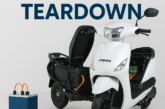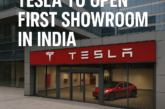
Electric bus is practical now and charging network too
The bus is the most essential part of the urban transport system and it can save the city from traffic congestions if efficiently utilized. The main drawback of an existing bus is that it’s internal combustion engine is powered by diesel which is a major contributor to emissions. The electrification of bus sector is at a higher rate now. It all started with auto major MAN with its first electric bus in the 1970s.

The electric bus didn’t gain its momentum due to charging time and charging network. It isn’t efficient compared to the diesel bus and the efforts to update the electric bus
was not a priority for any auto major.
Electric bus
However, the Electrification of the automotive sector has revived the electrification of Bus and trucks which were emission contributors at a large scale.
Countries like China are focusing more on replacing diesel buses with electric. But in India few young startups are targeting the existing buses by converting them into electric. Due to massive battery packs, charging these buses isn’t easier as charging an electric car.
The FuelCell and hybrids require a charging network which is not established at the moment. Apart from fuel cells and battery swapping, there are other emerging features for a convenient and practical daily charge of the urban bus network.
These buses need to be charged overnight and their battery pack holds the juice throughout the daytime operations. This is not so efficient in cities where public transport is used at a massive scale and companies are trying to solve this one particular problem of opportunity charging.

ABB and Ashok Leyland have their solution for this problem by charging the bus very fast at every stop while the people get in and out of the bus at a stop. The company names it as FLASH CHARGE because it is very quick.
Here’s how the tech works. The pantograph pops up to the charging outlet which is provided at every bus stop as a network in a particular route. The outlet feeds the energy to bus and only a smaller amount of energy is received and the process repeats at every stop while the exchange of passengers is going on. The pantograph gets back into its original position and the bus is ready to go for the next few stops with that little charge time and up to 80% fast-charged battery pack.

This solution is practical and limited only for intercity bus service. This can be implemented in highways if they have overhead electric lines in every part of the world and get rid of the battery pack forever in the bus.
Related: Electric bus market, growth & progression
If you are an EV manufacturer or EV Dealer or EV Supporter who want to share news related to electric vehicles on our website, please send an email to crm@electricvehicles.in
For the latest electric vehicles news, follow electricvehicles.in on Twitter,Instagram,Facebook and our YouTube Channels English, Hindi, Telugu and Tamil








Yes, this way we can boost the adoption of eco-friendly vehicles more and the government is working on such a pilot project of electric highway. You may be interested in this article http://electricvehicles.in/electric-highway-on-upcoming-mumbai-delhi-expressway/ have a look.